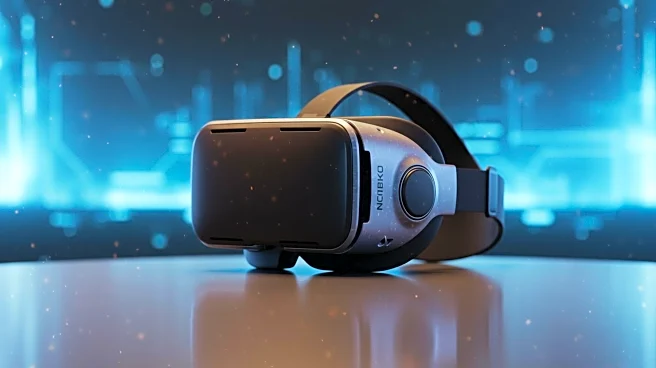What's Happening?
Meta's Tiramisu prototype, showcased at SIGGRAPH 2025, represents a significant advancement in virtual reality technology. The headset features beyond-retinal resolution, high brightness, and high contrast, aiming to pass the 'Visual Turing Test' where users cannot distinguish between real and virtual environments. Tiramisu achieves an angular resolution of 90 pixels per degree, surpassing previous models, and uses micro-OLED displays with custom refractive lenses to enhance brightness and contrast. Despite its narrow field of view, the prototype delivers stunning visual quality, showcasing the potential for hyperrealistic VR experiences.
Why It's Important?
The development of Tiramisu highlights the ongoing innovation in VR technology, with implications for industries such as gaming, entertainment, and education. Achieving near-retinal resolution and enhanced visual realism could transform user experiences, making VR more immersive and lifelike. This advancement may drive increased adoption of VR across various sectors, offering new opportunities for content creation and interactive experiences. The focus on brightness and contrast also addresses previous limitations in VR displays, potentially setting new standards for future headset designs.
What's Next?
Meta's research teams are working on Tiramisu 2, which aims to balance angular resolution, brightness, and field of view with practicality. The next iteration is expected to feature a wider field of view and reduced thickness, making it more comfortable for users. As VR technology continues to evolve, further improvements in display systems and lens designs are anticipated. The pursuit of the 'Visual Turing Test' may lead to breakthroughs in VR realism, influencing the development of consumer-ready headsets and expanding the applications of VR technology.
Beyond the Headlines
The quest for hyperrealistic VR experiences raises questions about the ethical and psychological implications of indistinguishable virtual environments. As VR becomes more lifelike, the potential for users to lose touch with reality or experience altered perceptions increases. This may necessitate discussions on the responsible use of VR technology and its impact on mental health and social interactions. Additionally, the environmental impact of producing high-resolution displays and advanced optics could become a concern, prompting considerations for sustainable practices in VR development.

